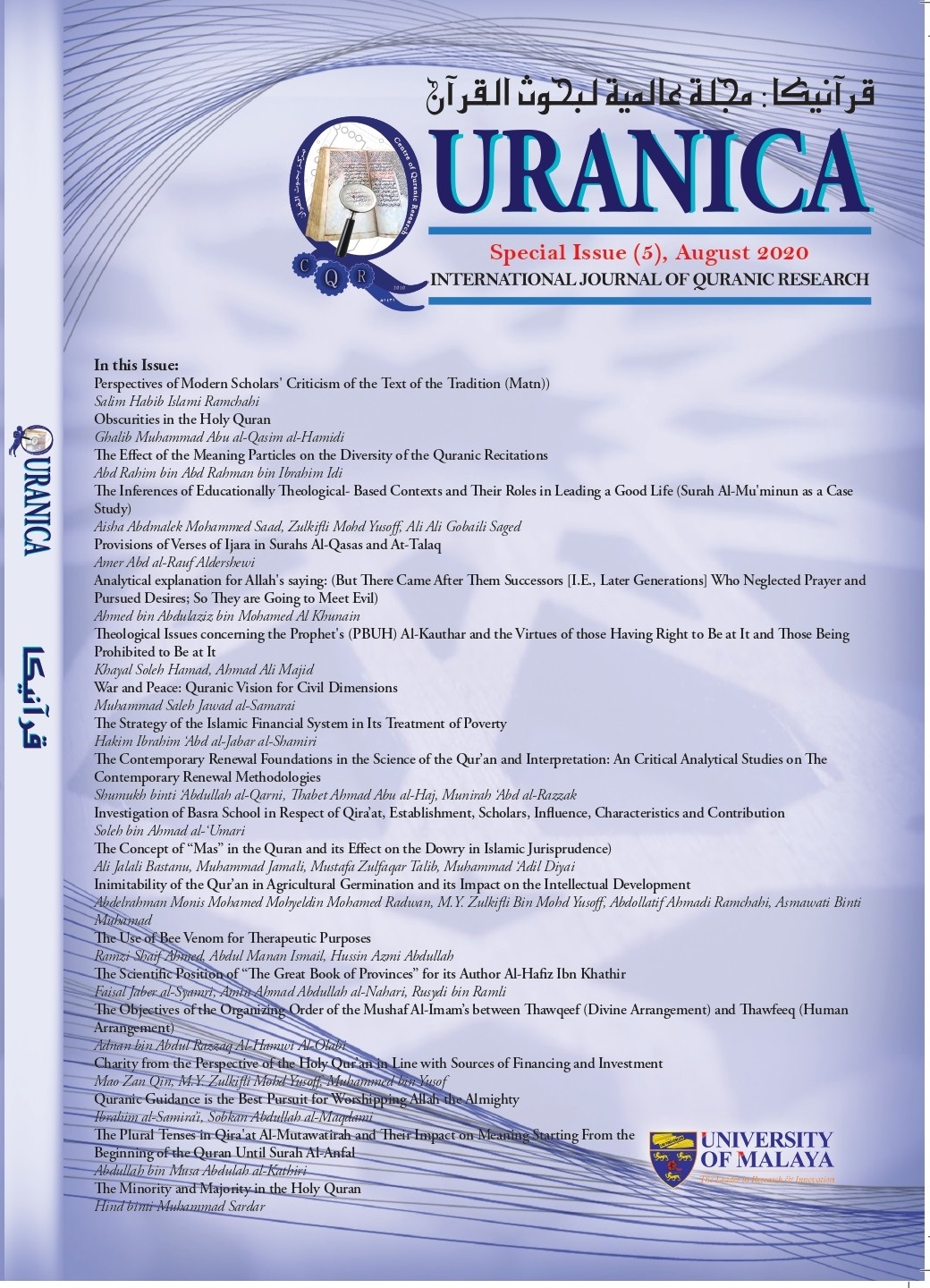Isti'māl Sammi al-Nahl li al-A'ghrād al-‘Ilājiyyah: Dirāsah Tahliliah Muqāranah
Main Article Content
Abstract
Bee venom contains many of the therapeutic substances that beneficial for disease treatment. However, this substance falls within the general context of toxins that the jurists regard it as impure. Others argue that the use of poisonous substance is prohibited although it is not impure. Furthermore, the extraction of the venom usually involves the act of killing though there is prophetic text prohibits the bee killing and hence; this issue motivates the study to be carried out.Therefore,the study attempts to answer the following questions: Whether the bee venom is impure and its use is forbidden; and whetherthe bee venom is considered among the poisonous substances that the jurists prohibit their use, and whether the prohibition of bee killing falls within the context of prophetic ḥadīth. The importance of the study lies in the problem that it addresses, especially with the lack of research that discuss on this issue. The study mainly adopts analytical method onscholarly works. Among the most notable results that the study came out is that, the permissibilityof using bee venom for treatment because it is pure, the permissibility to kill bees for human needs, and to use their venom for disease treatment. Even if these result in the death of the bee, because death has occurred not intentionally if the medical need arises for that and the treatment is specialized in this type of disease treatment.
Downloads
Article Details
Disclaimer
QURANICA makes every effort to ensure the accuracy of all its contents. However, opinions, discussions, views and recommendations are expressed in this journal do not necessarily reflect the official policy of QURANICA or views of its editors or publishers. Therefore, QURANICA and its publishers will not be liable for any controversy may be arisen. The journal reserves the right, at its sole discretion, to change its terms and conditions of publications.
Copyright
It is a condition of publication that manuscript submitted to the journal have not been published, accepted for publication, nor simultaneously submitted for publication elsewhere. By submitting a manuscript, the author(s) agrees that copyright for the article is transferred to the publisher, if and when the manuscript is accepted for publication.
